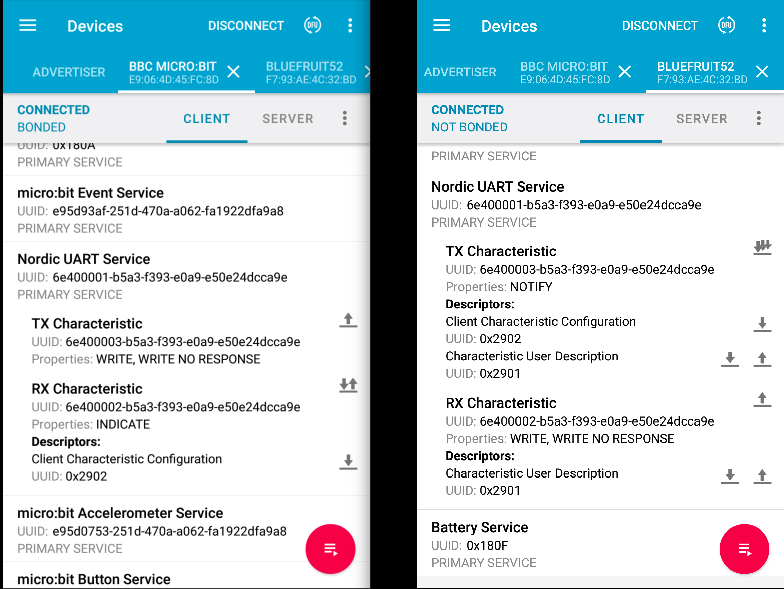thanks @bluetooth-mdw - awesome analysis as ever!
Aligning with Nordic's service would be a good idea I think, and notifications make more sense in my mind anyway i think. Unless anyone out there can think of any compelling reasons to the contrary, I'd suggest we change it.
@martinwork - Any significant implications in changing this for your app?

Nordic's nRF Toolbox application includes a UART client. It will not work with the UART service on micro:bit however. It gives an error saying the required services are not on the micro:bit. In fact the correct service is there but the nRF Toolbox application goes further and checks the UUIDs of the characteristics in the service and their properties. The characteristic with UUID 6E400002B5A3F393E0A9E50E24DCCA9E which we call the TX characteristic, uses Indications to transmit data from the micro:bit to the connected client. It should in fact use Notifications and this is why the Nordic application is rejecting the device. I got this from Nordic support by the way.
I don't know the background to the implementation of the UART service on micro:bit. I'm 99.99% certain I commented on the use of Indications rather than Notifdications to @jamesadevine at some point but forget the answer. It may be there's some rogue documentation out there somewhere.
Either way, this needs fixing. Happy to take care of it as it's a very small change I think.